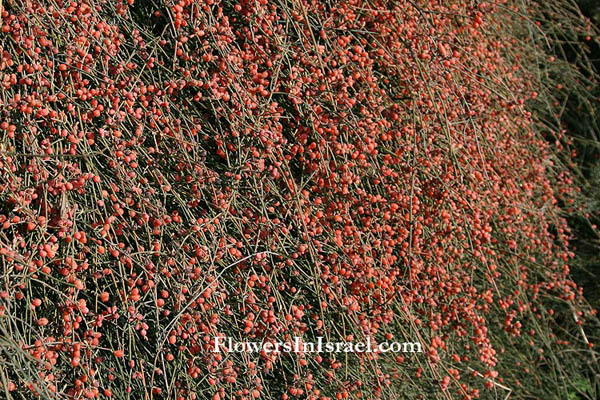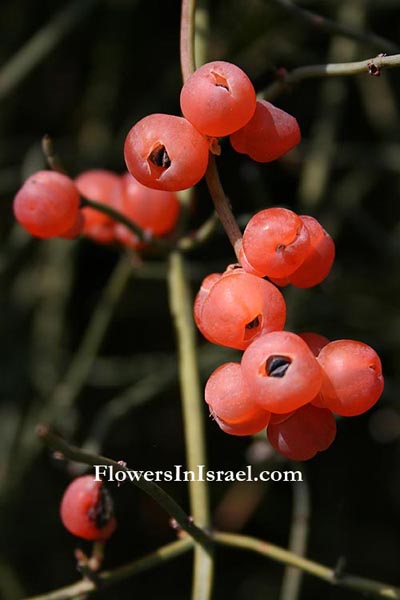Leafless Ephedra, Hebrew: שרביטן מצוי, Arabic: عدام , علندي
| Scientific name: | Ephedra foeminea Forssk. | |
| Synonym name: | Ephedra campylopoda C.A.Mey. | |
| Common name: | Joint pine, Leafless Ephedra | |
| Hebrew name: | שרביטן מצוי | |
| Arabic name: | عدام , علندي | |
| Family: | Ephedraceae, שרביטניים |

|
| Life form: | Phanerophyte, shrub | |
| Stems: | Small branches glabrous, gray-green, aging red-brown at first, later gray; uppermost bud elliptic; pith white | |
| Leaves: | Opposite, scale | |
| Flowers: | Green, Yellow | |
| Fruits / pods: | Male cones in dense axillary clusters or on side branches; female cones axillary or on side branches; ripe cones fleshy and red-colored; seeds 1 or 2 per fruit; 6–9 mm, generally > 2 × as long as wide, smooth | |
| Flowering Period: | April, May, June, July, August, September, October | |
| Habitat: | Mediterranean maquis and forest | |
| Distribution: | Mediterranean Woodlands and Shrublands, Semi-steppe shrublands, Shrub-steppes, Montane vegetation of Mt. Hermon | |
| Chorotype: | Mediterranean | |
| Summer shedding: | Perennating |

Derivation of the botanical name: Ephedra, the Greek name used by Pliny for the common mare's tail (Hippuris; hippo "horse" and oura "tail") which it somewhat resembles. certain species are the source of ephedrine which, as ma-huang, the Chinese have used in medicine for centuries. foeminea, feminine. campylopoda, campylos, καμπυλοϛ, curved, bent; pous, a foot; a curved foot. The Hebrew name: שרביטן, sharvitan, from שרביט, sharvit (scepter), because of the structure of the branches of the species.
|